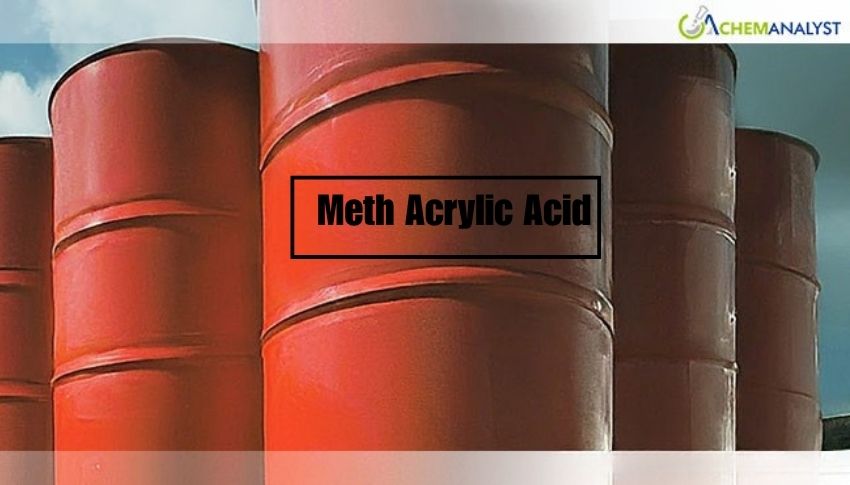Welcome To ChemAnalyst

In June 2025, Meth Acrylic Acid (MAA) prices fell in Germany, South Korea, and the USA because of tepid downstream demand, lower isobutylene prices, oversupply, and port congestion. Major industries such as automotive and electronics experienced lower activity, while delayed trades likely resulted in increasing inventories and price reductions. Although this is a short-term drop, coatings, adhesives, and construction demand should recover in the next few months, although risks stemming from feedstock uncertainty and logistical issues persist.
In June 2025, Meth Acrylic Acid (MAA) prices softened in major markets like Germany, South Korea, and the USA. The decline was driven by lower downstream consumption, falling feedstock prices, increasing supply, and trading disruptions. Even though long-term MAA market growth rests on applications in coatings, automotive, and construction, short-term factors led to a temporary fall in prices.
MAA is mostly used up in the production of Methyl Methacrylate (MMA), which is subsequently transformed into Polymethyl Methacrylate (PMMA). These end-products are of great importance in electronics, automotive components, glazing, and sign-making. In June, these downstream sectors experienced softer activity. Inventory corrections, postponements of construction projects, and reduced manufacturing output—particularly in the automobile and electronics sectors—translated to reduced MMA and PMMA usage, ultimately reducing the demand for MAA.
At the same time, the cost of isobutylene, a key feedstock for manufacturing MAA, fell during the month. This eased producers' input cost burden. In response to both the soft demand and lower production cost, most manufacturers reduced their offer prices to remain competitive. In addition, the global MAA market has risen in terms of capacity in recent years. Production levels remained high in the USA, South Korea, and Germany in June as demand subsided, which induced a local over-supply. Increased quantities of imports at reduced costs from sources such as China have further sustained MAA price pressure.
Logistics and trade complications also entered the scene. Delays at key European and Chinese ports disrupted export supplies, leading to inventory backlogs. There were backlogs at German and French ports owing to lack of labor and capacity limitations that hindered deliveries. The Chinese ports similarly had backlogs fueled by advance peak season orders and the lack of vessel supply. As the shipments were being diverted and delayed, the inventory levels in local markets rose, making sellers reduce MAA prices in a bid to clear inventories.
As a result of these combined influences, June 2025 MAA prices dropped by approximately 2.0% from the previous month in the three regions. Although this was a temporary dip, prices will rebound later in the coming months. Coating, automotive, and adhesives markets are poised to experience a rise in demand, boosted by summer building activity as well as rebounding export volumes. But risks remain from continued feedstock price volatility, logistics constraints, as well as global economic uncertainty. Close monitoring of supply-demand levels and trade situations will be necessary in the future.
We use cookies to deliver the best possible experience on our website. To learn more, visit our Privacy Policy. By continuing to use this site or by closing this box, you consent to our use of cookies. More info.
